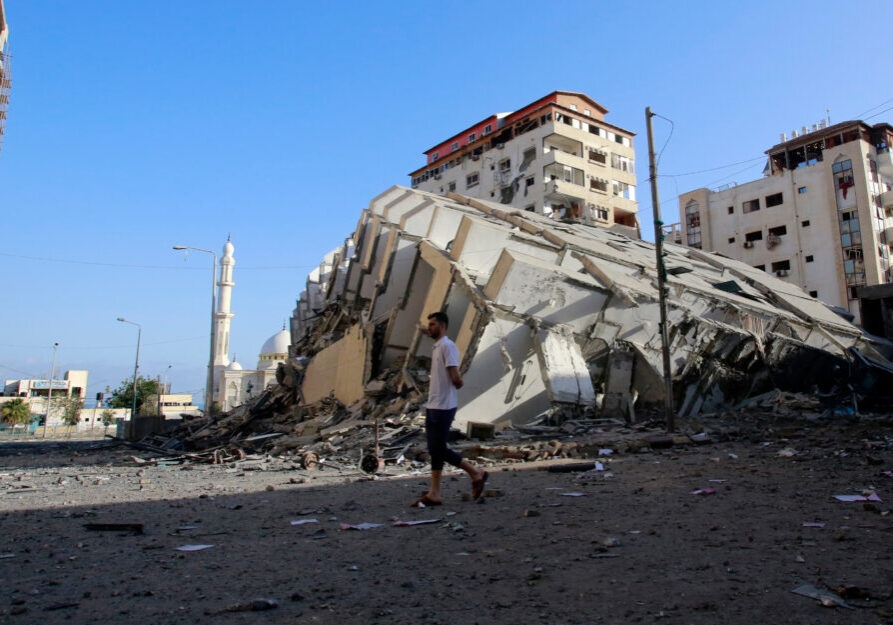Australia/Israel Review
Essay: Decade of Disappointment
Aug 27, 2010 | Amotz Asa-El
By Amotz Asa-El
It’s been a decade since Israeli and Palestinian leaders met as peacemakers only to part at loggerheads. Now, with most of the Camp David summit’s protagonists long gone from the scene, that ill-fated conclave’s military, diplomatic and political repercussions are seen on both sides of the conflict as seminal.
Led at the time by celebrated warrior and reputed risk-taker Ehud Barak, most Israelis expected the summit to produce a final-status deal between Israel and the Palestinians creating a Palestinian state, whose establishment was assumed to be just a matter of time.
Barak indeed justified his image and stunned even Bill Clinton, who hosted the summit, by proposing a re-division of Jerusalem – including a compromise involving the Temple Mount – and an Israeli retreat from nearly all the West Bank and Gaza, as well as a swathe of pre-’67 Israel.
Though he arrived at the summit politically crippled, having lost coalition allies who opposed his proposals and with them his parliamentary majority, Barak hoped to return home with a deal and make it the only issue at the heart of an early election campaign. ‘The choice,’ he planned on telling the Israeli voter, ‘is between war and peace, and it is yours to make.’ As it turned out, the choice – war – was made well ahead of Barak’s schedule, and not by Israeli voters.
Though his reasons remain the subject of debate, there is no arguing that Yasser Arafat rejected Barak’s proposals and emerged from Camp David intent on leading his people into another round of violence. Palestinians said their main grievance was over Barak’s rejection of Arafat’s demand that Israel allow in the 1948 war’s refugees and their descendants.
Some Israeli experts agree with Barak’s insistence that he had “ripped the mask off” Arafat who, in their view, never genuinely accepted Israel’s existence, even after signing the Oslo Accords. Others believe Arafat wanted a deal, but hoped to improve its terms by attacking Israelis at home. The Palestinians, for their part, attributed the violence to then-opposition leader Ariel Sharon’s visit to the Temple Mount two months after the Camp David talks.
Whatever his reasons, Arafat made a series of bellicose statements and by the last days of September 2000, violence had washed over not only Gaza and the West Bank, where Israeli soldiers were attacked and killed, but also Jerusalem’s Temple Mount, where Jewish worshippers were stoned, and the Galilee, where violent rioting was joined by Israeli Arabs. By October, two Israeli soldiers had been lynched by a mob in the West Bank and mortar bombs were fired at a Jewish part of Jerusalem from the outskirts of Bethlehem. The feeling in Israel was that the violence was orchestrated and pre-planned.
Soon after that, the Palestinians began to deploy suicide bombers throughout Israel, unleashing in all 161 such attacks between 2001 and 2005, taking the lives of 515 Israelis, while an additional 600 were murdered in other attacks.
The IDF arrived at this conflict only partly prepared. On the one hand, it had suspected that the Palestinians were preparing for a new confrontation, but, on the other, it had not anticipated the deployment of suicide bombers. When it realised the challenge, the IDF and the Shin Bet security service gradually developed what came to be known as low-intensity warfare tactics, including, among other techniques, so-called targeted killings, whereby secret agents on the ground and pilots in the air collaborated in sharpshooting specific terrorist activists. These tactics and others, including intelligence penetration into terror cells and sophisticated surveillance equipment, along with large-scale military campaigns like Defensive Shield in 2002, gradually wore down the Palestinian war effort until it died out in 2005, costing more than 4,000 Palestinian lives.
In hindsight, the Palestinian attacks caught Israel off guard, but like the Japanese Kamikaze attacks during World War II, they soon spent themselves and yielded no long-term strategic benefit. In fact, they may have damaged the Palestinian cause, and the first to argue this was Arafat’s eventual successor, Mahmoud Abbas.
Indeed, the Palestinian resort to violence in general, and their attacks on helpless civilians in buses and cafes in particular, discredited the Oslo process in the eyes of most Israelis, and made much of the Israeli public lose faith in its political advocates.
The first political result of this came in February 2001, when Ehud Barak suffered the worst electoral defeat in Israeli history, losing to Ariel Sharon by a margin of 2:1. One decade and three general elections on, it’s clear that the Israeli voter identifies Labor with the violence Israelis endured in the aftermath of the Camp David summit. The former ruling party, which in the days of David Ben-Gurion and Golda Meir commanded nearly half the Knesset, has today shrunken to a tenth of the electorate, and polls indicate its popularity continues to fade.
Even so, the public’s punishment of Labor seems more pragmatic than ideological. In fact, the Palestinian violence generated what Israelis had long thought they would never live to see emerge: a new consensus. Having seen the Right and Left attempt each in its turn to settle the West Bank and then to trade it off, a critical mass of Israeli voters has come to perceive the two ideas that dominated post-1967 politics – so-called Greater Israel and Land for Peace – as naïvely utopian.
This was first monumentalised with the emergence of the West Bank separation fence. Originally opposed with equal resolve by then-Greater Israelite Sharon, who feared it would weaken Israel’s claim to lands beyond the fence, and by Oslo prophet Shimon Peres, who feared it would render his New Middle East vision futile, the fence was nevertheless imposed on the two by an increasingly post-ideological Israeli public.
The new consensus was later further developed with Ariel Sharon’s retreat from Gaza, shortly before Shimon Peres joined him in establishing the centrist Kadima party. Binyamin Netanyahu’s subsequent endorsement of the two-state formula is also part of the new consensus, whereby most Israelis espouse a mixture of diplomatic scepticism and military vigilance with a mental readiness for massive concessions once an equally pragmatic Palestinian partner who truly leads his entire people finally emerges.
Ironically, this is pretty much the opposite of what Yasser Arafat has bequeathed the Palestinians with his decisions in 2000. What began with a broad consensus embodied by Yasser Arafat has given way to a deep chasm between convictions, regions and inclinations.
Perhaps the most forgotten aspect of Arafat’s transformation during the last phase of his career was his abandonment of his original rhetoric about establishing a secular democracy, and its gradual replacement with religious terminology. Whether this was a deliberate shift or was just Arafat’s response to a zeitgeist shaped by others is separate question. What matters is that rather than confront the religious circles that were out to wrest the Palestinian street from his own control, he let the people understand that he was joining them. In doing this, he sowed the seeds of the feud at which the Palestinians arrived soon after his death, when Hamas took over Gaza violently, and severed it from Mahmoud Abbas’ government in the West Bank. Today, as Abbas keeps manoeuvring to avoid direct talks with Netanyahu, the feeling in Jerusalem is that he realises he is in no position to strike a deal in the name of Gaza’s fundamentalists, and therefore prefers to muddle through diplomatically while nurturing prosperity and security in the West Bank.
And so, the decade following the Palestinian resort to violence in September 2000 seems to have produced an Israeli consensus, a Palestinian schism, and a diplomatic stalemate – a stark contrast to the optimism with which the world watched Ehud Barak and Yasser Arafat enter Bill Clinton’s cabin at Camp David back in July, 2000.
Tags: Israel






